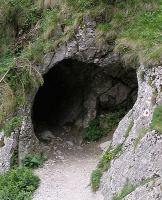 The question has arisen “were there other peoples present in the promised land when the Nephites arrive?” This is an important query and much depends on the answer. It can even help us in defining Book of Mormon geography.
The question has arisen “were there other peoples present in the promised land when the Nephites arrive?” This is an important query and much depends on the answer. It can even help us in defining Book of Mormon geography. On the one hand, we get the impression from reading the Book of Mormon that the Lehites landed in an untouched paradise. No other peoples or groups are mentioned and we are specifically told that the land was an undeveloped wilderness.
On the other hand, how did they increase in numbers so quickly if there weren't outside additions to their population? How were there enough women a generation later for Jacob to be worried about the men taking other wives and mistresses?
My opinion is that there were scattered bands of renegade Jaredites living a “hunter-gatherer” existence, to use a term populatized by the anthropologists. They were weak, family size groups, that were not organized into social units and therefore posed no danger for the Lehites who were better organized and equipt.
Such an enviroment would have allowed for outside individuals or families to join the Lamanite or Nephite society without any disruption, thus gradually increasing their population. It would explain individuals such as Sherem, an apparent outsider who in addition to being proficient in the Nephite language, had a different religion he was trying to promote among the Nephites.
However, if these outsiders were highly organized and powerful societies, it would be a much different situation. Societies such as the Olmec, Maya, or Aztec were constantly on the move to conquer outside groups, enslaving them or putting them under tribute. There were numerous such aggressive city states in Mesoamerica in 600 BC. One only has to study some of the ancient histories, such as the Codex Mendoza, to get the feel of the Mesoamerican environment. It was one of constant warfare, with the strongest entity dominating the rest. If the Lehites had stumbled into such an enviroment upon their arrival in the Americas, they would have been as sheep among wolves and quickly devoured. They could not have existed independently and maintained their freedom of religion and government.
This has left the proponents of the Limited Tehuantepec Theory with a dilemma. Realizing that there were highly developed cultures in Mesoamerica centuries prior to the arrival of the Lehites, they have adopted the notion that the new arrivals “co-existed” among the previous inhabitants, adopting some of their culture, language, etc., but apparently not coming into conflict with them. This notion is completely unrealistic in view of what we now know about the Mesoamerican cultures. It would have been impossible for the Lehites to have survived, let alone maintained their independence, territorial rights, and religious beliefs.
The only possible enviroment in which the Lehites could have flourished would have been in a cultural vacuum such as existed in the land southward at the time of their arrival. This was a land which the Jaredites had maintained as a wilderness, had restricted it for a hunting preserve, and limited population movement into the area. There may have been a few renegade Jaredites roaming the land southward, but there were no settled populations and no establised cities, a perfect environment for the establishment of the Lehite colony.
